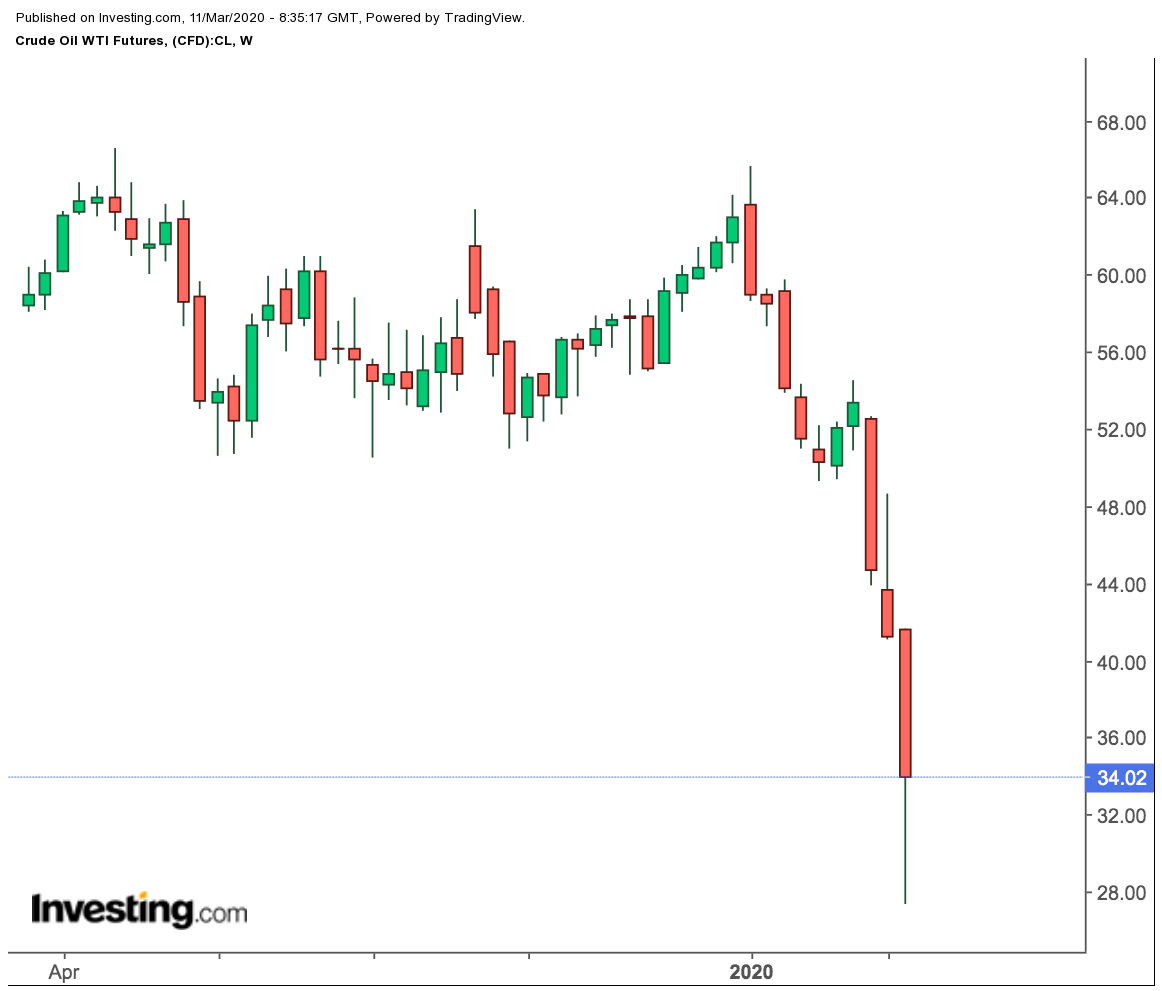Blamed partly for the biggest price drop in three decades and awaiting doom to be unleashed upon them by the Saudis and Russians, U.S. shale drillers are pictured again as the poster boys of notoriety for overproduction in oil.
Yet, U.S. oil rigs — a trusted indicator of production, even if lagged — are down by 152 or 18% year-on-year. This means that although U.S. crude output hit a record of 13.1 million barrels per day at end-February, the industry was working to cut production.
Of course, shale drillers weren’t always the best behaved lot.
Once Guilty of Self-Destruct
Many were guilty of self-destruct in the middle of the last decade, when they pumped like there was no tomorrow. At the height of the industry’s indiscretion in October 2014, there were 1,609 rigs in operation. That drove U.S. crude prices down from highs of above $100 per barrel to around $26, unleashing more than 100 shale bankruptcies in just 18 months.
And as though they hadn’t learned their lesson, U.S. drillers were again running with spigots fully open two years back. This time, the rig count ballooned from a low of 316 in May 2016 to 873 by December 2018. More crash and burn followed.
But since then, the so-called U.S. oil frackers — shorthand for the hydraulic fracturing of oil they engage in — have been mostly disciplined, resisting rig builds even when U.S. crude reached a 2019 high of nearly $77 a barrel.
Exemplary Restraint Now
To the disappointment of oil bears, who had counted on the fracking community to repeat the boom-and-bust practices of past years, many in the shale business have focused in the past two years on cutting expenditure, preserving capital and paying investors decent dividends.
Despite their restraint, U.S. crude production has grown by more than 2 million barrels per day on average since the end of 2018, making the United States the world’s largest producer. On the flip side, the country has also become a net oil exporter, achieving its 40-year quest for energy independence.
So, when the Saudis and Russians declared a war for oil market share this week — with the ostensible target of bringing down U.S. shale, which they believe to be responsible for their woes — the question to be asked is why is there a continued disconnect between falling oil rigs and U.S. production rates?
The answer, it would appear, is that drillers have been cutting, but not in their most productive or economic fields. The slow-but-sure finishing by frackers of drilled-but-uncompleted (DUC) wells has also brought more oil to the field, without adding to rig counts.
After Monday’s 25% crash in U.S. crude prices — the biggest drop in three decades, eclipsed only by even bigger percentage losses in shares of shale drillers — drillers continued to pledge fiscal discipline.
More Discipline To Come
Diamondback Energy (NASDAQ:FANG) cut its activity from nine completion crews to six, dropping two more completion crews than scheduled. The shale producer said it will also cut capital spending, though it didn't specify an amount.
Parsley Energy (NYSE:PE) said it has slashed its 2020 free cash flow outlook to at least $85 million from a prior view of at least $200 million, and announced a general activity slowdown as well.
EOG Resources (NYSE:EOG) also intends to curb spending to protect returns to its shareholder dividend, saying it will release details later.
Occidental Petroleum (NYSE:OXY) said it was trimming its dividend to $0.11 from $0.79 per share. The company also said it will reduce 2020 capital spending to between $3.5-3.7 billion from $5.2-5.4 billion and implement additional operating and corporate cost reductions.
Saudi-Russian Pressure Cannot Be Underestimated
“The prospects of WTI oil prices in a $30-$45 per bbl range through mid-2021 would likely cause U.S. producers to lower activity to better manage capex/cash flow,” Goldman Sachs said in a note on Wednesday.
Wall Street’s leading voice in energy trading also had no illusions about the sheer pressure the Saudi-Russian campaign would bring to bear on shale in the coming months. Goldman added:
“We are now returning to a shale scaleback period last seen in response to (the) 2014 oversupply (situation) and OPEC’s decision to favor market share.”
